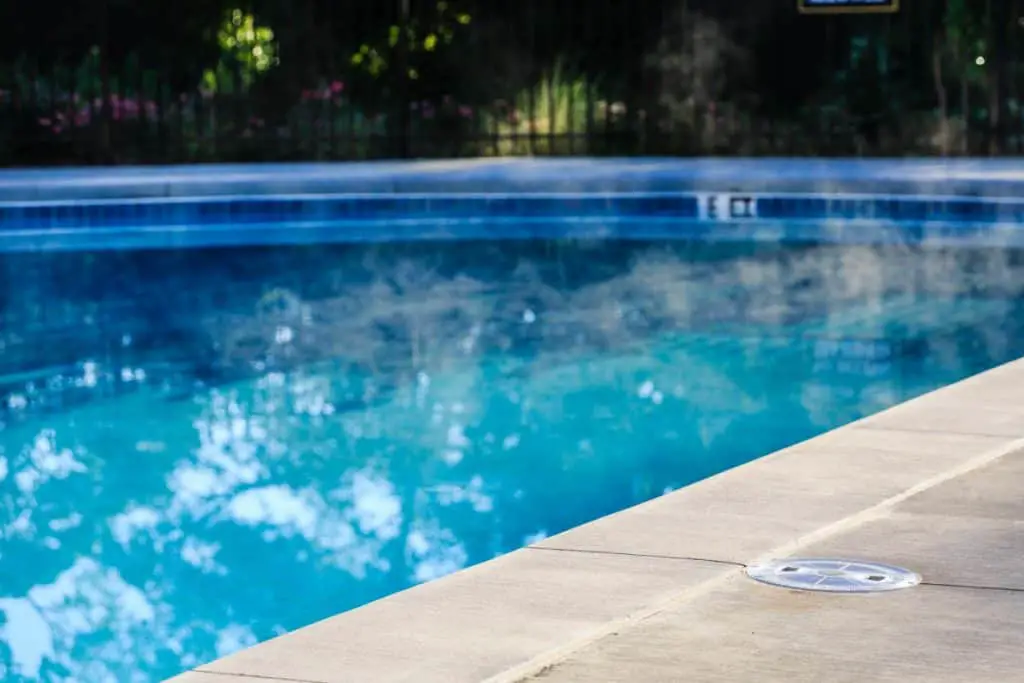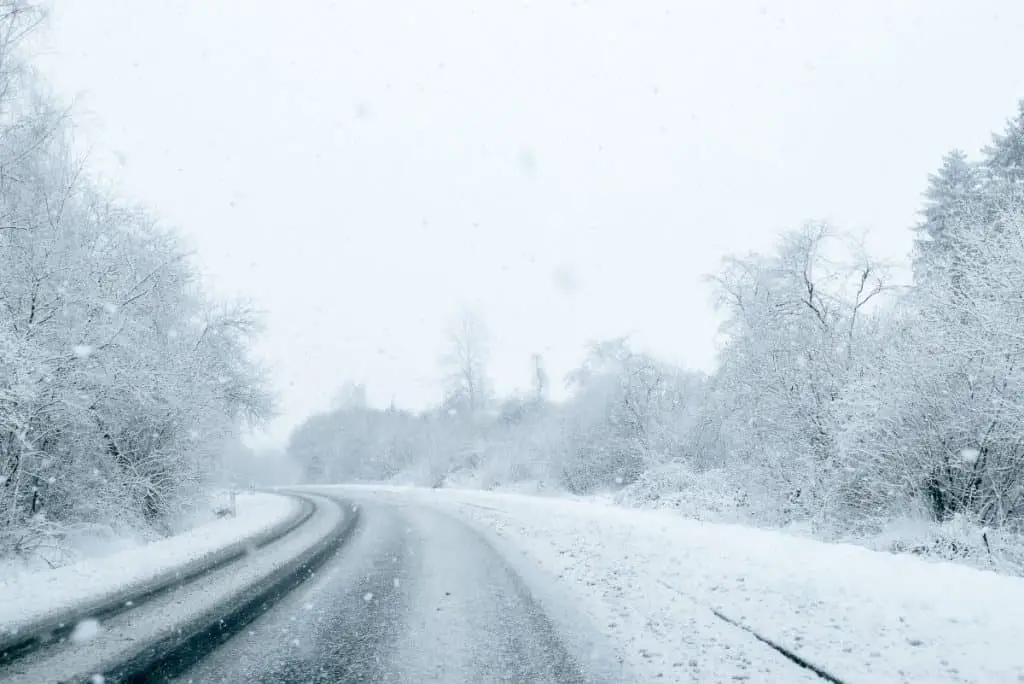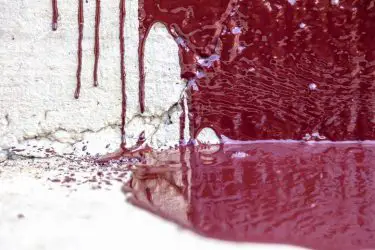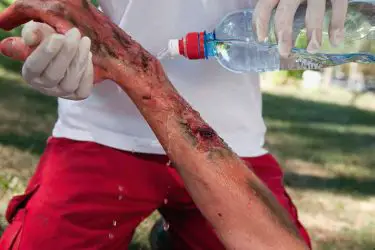Sometimes concrete gets very hot. I’m sure you’ve had the experience of walking barefoot at the pool on the pavement, rushing to the water, or your towel to stop the burning sensation on your feet.
There are two reasons that concrete gets hot. The first is the curing process, an exothermic chemical reaction between cement, water, and sand that can emit heat. The second is sustained exposure to the sun. Sometimes, heat from the sun can even exasperate the temperature rise from curing.
But what processes cause these temperature rises? It turns out that there’s actually a lot to these particular material phenomena.

Table of Contents
Curing
Concrete goes through two different hardening processes after it’s first poured. The first is drying, where the water in the concrete evaporates out, leaving mostly the hard mixture of aggregate, sand, and cement.
However, concrete shouldn’t be allowed to dry completely, because curing requires water to occur.
When water and cement are both present in concrete, the water and the cement will bond together over a long period of time.
All sorts of things can affect the curing process, from the ambient temperature of the air to the type of cement that’s used in the mixture
As a side note, concrete needs to be kept wet throughout the curing process or else it won’t come out to its intended strength.
Types Of Cement
When it comes to curing, one of the biggest influences on the amount of heat produced is the kind of cement that’s used. There are five commonly used types of cement, although domestic projects will only use types 1 and 2.
Type 1 cement is also known as “normal cement.” This kind of cement doesn’t have any special precautions to decrease the amount of heat emitted during the process.
Most projects use Type 1 cement, although projects where keeping the temperature down is critical, Type 2 can be used instead.
Type 2 cement is designed to produce less heat over a greater period of time. Aside from being used in normal projects, type 2 cement is also suitable for relatively massive structures such as piers and heavy walls. It is also relatively resistant to sulfate attacks.
Of note is also type 4 cement, which produces only minimal heat during curing. It’s only usually used in enormous projects like gravity dams.
Gravity dams are dams that are meant to hold back all of the water from a river using only their own weight. These structures need to be absolutely enormous.
In large structures like gravity dams, the heat produced by curing reaction can be enough to be a danger to the structure as a whole.
This makes cement, like type 4, a good builder since it reduces the amount of heat produced through curing critical for many modern superstructures.
The Hoover Dam is one example of a structure so big that exothermic heat from the reaction could have caused huge problems if it weren’t properly regulated.

The Sun
The other big reason for hot concrete is the sun. The light from the sun is one of the primary reasons for all heat on earth. However, it has a particular effect on pavements like concrete.
After the concrete has cured, it takes a lot of energy to make it heat up, even a little bit. This makes it a reservoir for energy from sunlight, and it means that if the concrete receives enough energy, it can get very hot.
While its light color makes it more difficult to heat up than asphalt, it has the added property of retaining heat very well. This means that when it gets hot, it tends to stay hot.
We know that in summer or early fall, concrete can end up much hotter than the ambient temperature even when it’s all through curing.
This can actually be moderately dangerous. There’s another article about the danger that sun-heated concrete can be to pets and young children. Check it out!
If you want your concrete to stay relatively cool, one thing that you can do is make sure that it has a shade for the hottest parts of the day.
Because the sun does so much of the work to heat concrete, just blocking direct sunlight can mitigate a lot of the potential heat.
Frequently wetting hot concrete with cool water can also be a good way to keep the temperature down. However, on very hot days it might not be enough to keep the heat down, but if the finish is too smooth it can actually be more dangerous.
Curing In Hot Weather
As mentioned earlier in this article, the ambient temperature can have an effect on the curing process. The heat from the sun can speed up the curing process significantly, which can have the added effect of drastically increasing the temperature of the concrete.
This can actually have several adverse effects on the pour itself. First, when things get hot they tend to expand. When this happens to concrete this can result in serious cracking all throughout the slab.
The second big effect from all that heating is that while it will strengthen much faster immediately, it will end up much weaker overall.
The Opposite Of Hot

But what happens when concrete gets super cold? Well, if the concrete is still curing, it actually needs a certain amount of heat for the chemical reaction to occur the right way.
This means that when the ambient temperature is too cold, the curing process will essentially freeze. This tends to occur around 50 degrees Fahrenheit.
This means that it’s important to choose the time of year that you pour your concrete. If it’s too hot it may lose strength in the long run. If it’s too hot it could take a very long time to cure fully, which could make it essentially unusable for quite some time.
So Should My Concrete Be Hot?
Yes. If you were worried that your concrete was in danger because it’s too hot, then don’t. Even if the heat is enough to hurt the curing process, the slab probably won’t be completely ruined.
Ultimately, it’s completely normal and natural for concrete to be hot.



